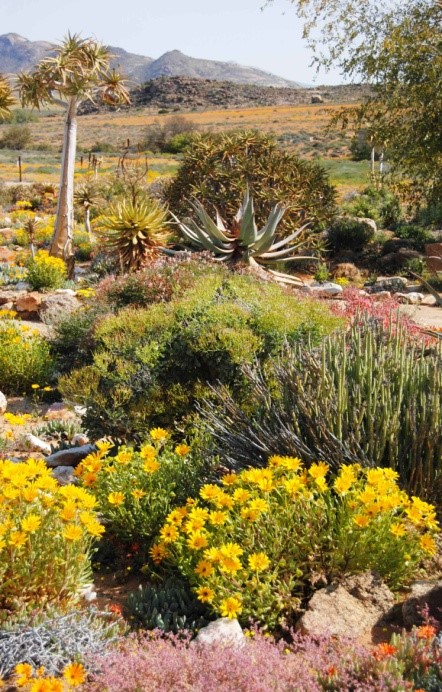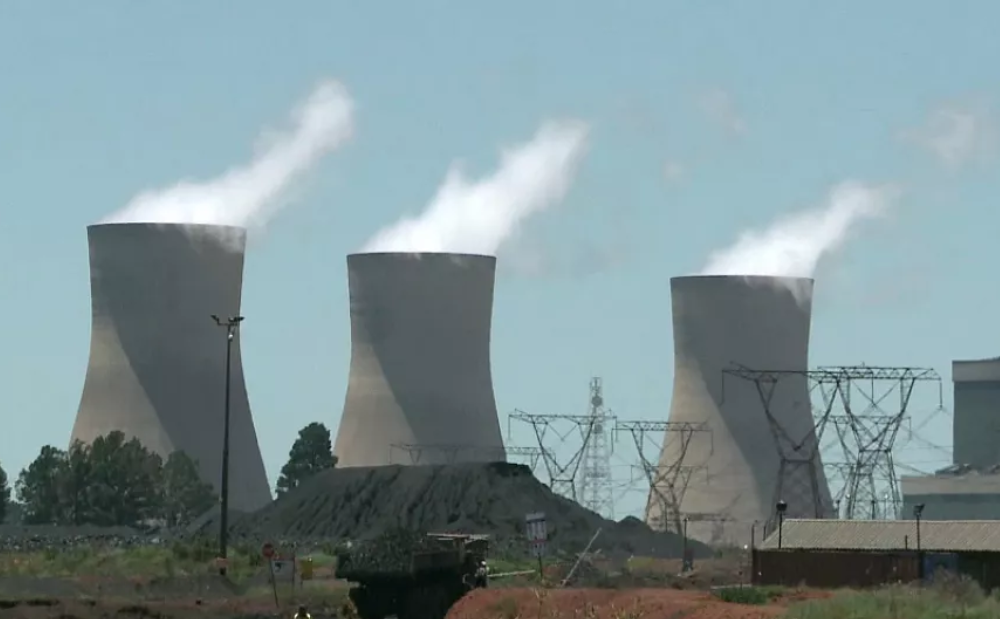Drought Proof your Garden or Farm
- Published:
As the climate increasingly destabilises, drought conditions in Southern Africa will increase. Valerie Payn, who has written the book An Ecological Gardeners Handbook, offers advice on how we can adapt our gardens and surrounding environment to increased temperatures and lower rainfalls.
Valerie Payn*
 When faced with drought farmers and gardener often react by irrigating more, to make up for the low rainfall. This can only be a short term solution. In a prolonged drought, abnormally high water use means water reservoirs soon run dry. A far more sustainable solution is to plan gardens, or farms, for drought resilience – the ability to withstand drought. This is especially important in areas like Southern Africa which frequently suffer drought.
When faced with drought farmers and gardener often react by irrigating more, to make up for the low rainfall. This can only be a short term solution. In a prolonged drought, abnormally high water use means water reservoirs soon run dry. A far more sustainable solution is to plan gardens, or farms, for drought resilience – the ability to withstand drought. This is especially important in areas like Southern Africa which frequently suffer drought.
Brittle landscapes
Allan Savory, the renowned Zimbabwean conservationist farmer, talks about brittle landscapes. These are landscapes that do not hold moisture well. Brittle landscapes are particularly susceptible to drought conditions. We can alleviate the worst effects of drought by increasing a landscapes moisture holding capacity to reduce landscape brittleness.
Increasing landscape resilience to drought, whether this is a farm or garden, involves an integrated approach that combines 3 steps.
These are:
- Prevent as much water moisture loss as possible.
- Capture and conserve as much moisture from the surroundings as possible
- Cultivate plants that can cope with arid conditions.
Prevent moisture loss
Moisture in a landscape is held in the soil, the plants, the surrounding atmosphere (humidity, rainfall, cloud cover, mist and dew are all forms of atmospheric moisture), and in water reservoirs such as ponds, dams, streams, tanks, underground aquifers etc.
Landscapes loose moisture from evaporation, as well as through transpiration (the loss of moisture from plant leaves and stems). High temperatures, windy conditions, low humidity levels, sparse plant covering, and humus poor soils all increase the rate of moisture evaporation and transpiration from landscapes.
Bare soil heats up and dries out much quicker than covered soil, adding to high temperatures and low humidity.
Plants hold moisture in their leaves, stems and roots. They slowly release this retained moisture as they transpire, increasing humidity levels in the surroundings.
High temperatures and windy conditions increase levels of plant transpiration. Plant cover helps cool the ground, prevents moisture loss from the soil, reduces extreme surface temperatures, humidifies the air and helps break wind force. Sparse plant cover, then, adds to problems of high temperatures, low humidity levels, and problematic, drying wind conditions.
Soil condition also affects landscape moisture levels. Soils with a high humus content, such as humus rich clay and loam soils, or well mulched or composted soils, retain moisture far better than sandy soils that lack humus.
In a typical drought then, it is not only the lack of rainfall that creates problems. Hot, windy, low humidity conditions, soil conditions and reduced plant cover compound the lack of rainfall and add to the aridity. Under these conditions landscapes can quickly become dehydrated, even if irrigation is possible.
These are some steps farmers and gardeners can take to reduce landscape brittleness and improve a landscape’s drought resilience:
- Use mulch, compost and green manures to build up soil humus levels. Humus rich soil acts like a sponge, holding moisture better than humus poor soil.
- Cover bare soil. Cover soil with plants, stones, pebbles, bark chips, unglazed tiles, mulch, compost, wood chips or ‘stover’ to help prevent soil moisture loss and moderate high ground temperatures. Covering soil with plants or mulch has a triple impact effect. It cuts down soil moisture loss, reduces hot, drying temperatures and protects the soil and plant roots against the worst effects of soil drying winds.
- Use no-till or low till practices. Disturbing the soil by heavy digging or ploughing releases buried moisture, quickly drying out soil.
- Capture water. Build water holding tanks, reservoirs and deep ponds to catch rainwater and hold it for irrigation in dry periods. Catch, hold and channel water that runs off slopes by contouring water catching swales, terraces, contours, ditches or depressions to catch and slow water run-off. These will increase the amount of moisture that sinks into the ground. They can also be planned to act as water channels, directing water to where it is needed. In areas that get heavy dew, or frequent mist or fog, build dew traps to capture and channel moisture to where it’s needed, or into storage tanks.
- Recycle water. Bath, shower and kitchen sink water can be recycled onto garden beds, provided you take care to use household products that are non-toxic to plants.
- Grow drought tolerant plants that can cope with aridity without having to be heavily irrigated.
- Irrigate correctly. Irrigate deeply and less often to encourage deep root growth. Shallow sprinkling encourages the growth of shallow surface roots that quickly dry out when the soil surface dries. Use special irrigation techniques, such as drip irrigation, to get the water right where it is needed, rather than over-head sprinklers that lose a lot of water through evaporation. Irrigate at night or in the cooler part of the day to reduce water loss from evaporation. Avoid irrigating on windy days.
- Create shelter belts and wind-breaks in strategic places to break drying winds. Breaking the force of the wind can reduce moisture loss through evaporation and transpiration, and help increase humidity levels. Digging protective swales and depressions in the soil to shelter young plants, and building up sheltering banks, berms, mounds or rockeries, can help break the force of the wind.
- Create multiple layers of plants, with different layers providing shelter for other layers. Shade creating trees or overhead structures such as overhead trellis or shade clothe can help reduce high temperatures and evaporation rates.
- Plant with water absorbing materials such as terrasorb that hold moisture around plant roots. The expense of these is well worth the benefit in water savings.
*Valerie Payn is the author of the book, An Ecological Gardeners Handbook, which explains how gardeners can use natural processes to create productive, flourishing, healthy garden eco-systems. She also has an Mphil, Degree in Sustainable Development Planning and Management.
Where can I get An Ecological Gardeners Handbook?
Those in the Cape Town surrounds can buy a copy from Kate Davies (kate@safcei.org.za) for R350. For more information where else copies can be obtained, please contact Valerie Payn at vallieb@gmail.com or on 083 441961.
An International eBook edition is also available from http://www.amazon.com/Ecological-Gardeners-Handbook-Eco-System-Sustainably-ebook/dp/B013CCJNSC
Who we are

SAFCEI (Southern African Faith Communities’ Environment Institute) is a multi-faith organisation committed to supporting faith leaders and their communities in Southern Africa to increase awareness, understanding and action on eco-justice, sustainable living and climate change.
Featured Articles
-

South Africa: Who Ends Up Paying If DMRE Cooks the Price of Nuclear Power?
-

South Africa’s nuclear energy expansion plans continue to draw criticism, environmental NGOs chew over legal challenge
-

Earthlife Africa and SAFCEI respond to latest unsettling nuclear news regarding the ministerial determination
-

Open Wing Alliance Africa (Virtual) Summit 2023
-

The Green Connection and SAFCEI respond to energy minister's divisive and deflecting comments
-

Job Vacancy: FLEAT Coordinator







